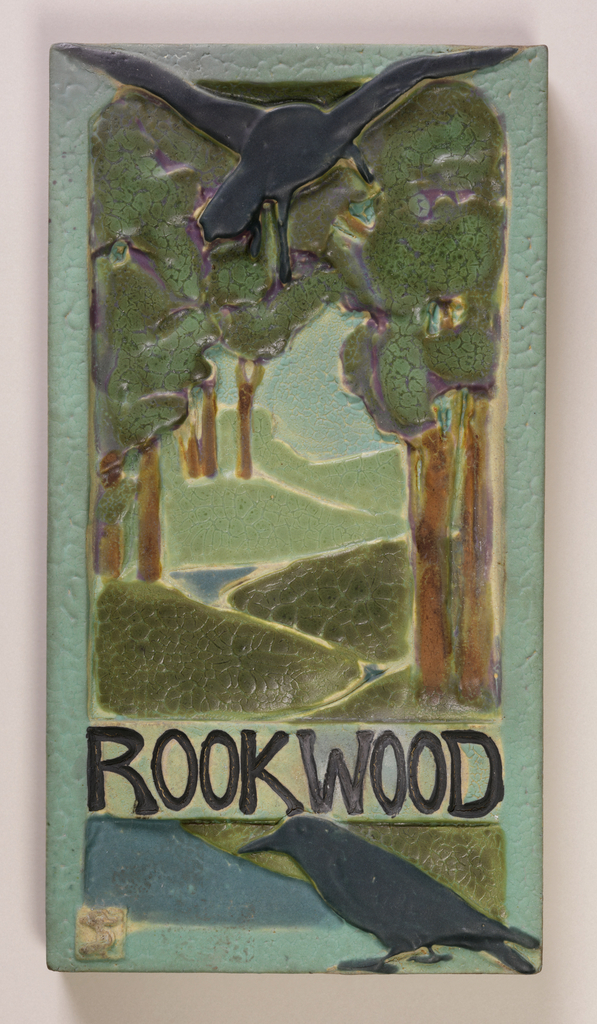My student rental on one of the famous hills in Cincinnati yielded a one bedroom first floor apartment in an older house on a busy street. It seemed safe, was affordable, but most importan,t and the selling point for me, were the Rookwood tiles embedded in the fireplace and doorway frame. Such tiles were popular at the turn of the 19th and 20th centuries, both on the exteriors of buildings for fireproofing qualities in response to the Chicago fire of 1871, and on interior surfaces, reflecting the public’s desire for more sanitary conditions. Aesthetics also played an important role as Americans embraced a décor that was uplifting and appeared hand-crafted, rather than machine-made.
The Rookwood Pottery of Cincinnati, the largest of the over 100 potteries in the U.S. at the time, embraced the Arts and Crafts philosophy, describing the company as a “work-shop art industry and not a factory.” Well known for simple brown and green glazed vessels, Rookwood introduced an architectural faience (tile) department by 1902, producing a range of fireplace mantels and wall tiles, including tiles for the New York Subway system in 1903.
This particular tile, Rookwood, was made specifically for the pottery’s showrooms to advertise the full range of available matte glaze colors and textures. The dull-finishes were well suited to architecture. Sara Alice Toohey (see the artist’s relief monogram on lower left), in charge of the architectural department, created this tile’s simple design incorporating the company’s namesake, two rooks or ravens, in a flatten landscape.
Though I lived with that Rookwood fireplace for only a brief period, I recall it vividly. The memory of those simple architectural design elements re-connects me to that particular geographic location, where my everyday surroundings were transformed through design.
Two Rooks
